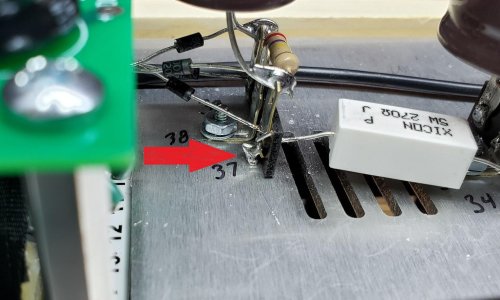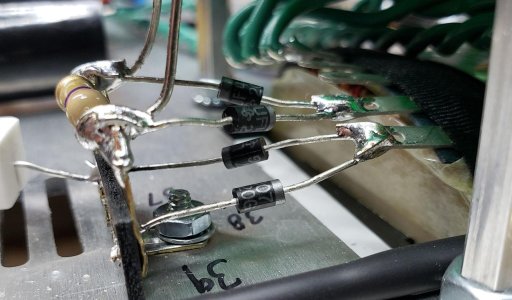ScottAstroNut
Member
My next question, then, is how to go about diagnosing that without blowing another resistor once I get a replacement and have repaired the circuit?
As I mentioned, at one time I did electrical engineering, but it was all digital logic systems. I did my circuit design on breadboards or perfboards with lots of wire wrap. If I mis-wired something, usually it would not go up in smoke! I did learn about regulated power supplies, but only to the extent that I could build one that would provide the 6 to 12 VDC I needed for my digital IC's. You analog (and especially you audio tube-analog!) guys work in an entirely different world. One that I am very much enjoying getting to know a bit better by building your kits. I have a lot of respect for the expertise and experience you need to do your kind of job.
Having circuits that work only upside down or right side up is amusing to me! I love EE war stories!
As I mentioned, at one time I did electrical engineering, but it was all digital logic systems. I did my circuit design on breadboards or perfboards with lots of wire wrap. If I mis-wired something, usually it would not go up in smoke! I did learn about regulated power supplies, but only to the extent that I could build one that would provide the 6 to 12 VDC I needed for my digital IC's. You analog (and especially you audio tube-analog!) guys work in an entirely different world. One that I am very much enjoying getting to know a bit better by building your kits. I have a lot of respect for the expertise and experience you need to do your kind of job.
Having circuits that work only upside down or right side up is amusing to me! I love EE war stories!


